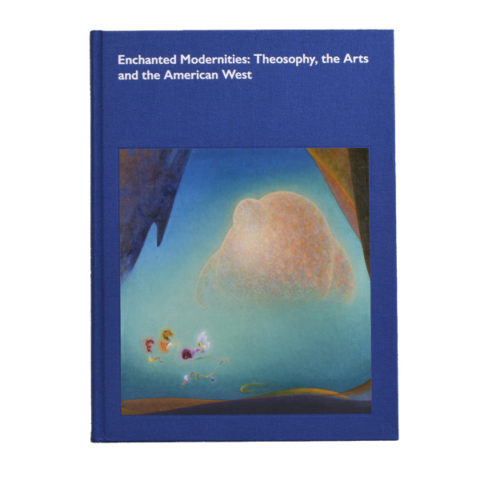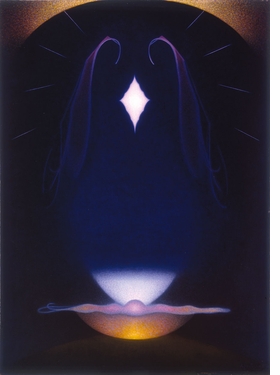It is in America that the transformation will take place, and has already silently commenced – MADAME BLAVATSKY
With these words, written in The Secret Doctrine in 1888, Helena Blavatsky drew a direct connection to the dynamic energy of nineteenth-century Americanism and the Theosophical Society. She and her successors would specify the American West as the site for a rebirth and re-enchantment of humanity, drawing those seeking spiritual fulfilment outside of organized religion to the dramatic landscapes of California, Arizona, Utah, and New Mexico. The syncretic nature of Theosophy encouraged individualism in belief, fitting well the popular notions of freedom and personal agency used to characterize the American West.
Enchanted Modernities
Theosophy, the Arts and the American West
Edited with text by Christopher V. Scheer, Sarah Victoria Turner, James G. Mansell. Text by Helena Capkova, Deniz Ertan, Anna Gawboy, Katie J.T. Herrington, Paul Ivey, Katie Lee-Koven, Rachel Middleman, Christine Ödlund, Marco Pasi, Gauri Viswanathan, David Wall.
In 2014, the Nora Eccles Harrison Museum at Utah State University staged the first exhibition to explore artistic responses to the confluence of enchanted thought in the American West in the early twentieth century. Building on this research, Enchanted Modernities: Theosophy, the Arts and the American West is the first publication devoted to these relationships in art and music. Through a series of interlocked contextual essays, interviews, and interpretations of individual works by the exhibition’s curators and invited scholars, this publication explores the role of Theosophical thought in fostering dynamic cultural networks in the region that redefine the relationship between enchantment and modernism.
When the occult came to the American West: individualism and magic in the art of California, from Agnes Pelton to Jess
“It is in America that the transformation will take place, and has already silently commenced.” With these words, written in The Secret Doctrine in 1888, occultist philosopher Helena Blavatsky drew a direct connection between the Theosophical Society and the dynamic energy of 19th-century Americanism.
Blavatsky and her successors identified the American West as the perfect site for a rebirth and re-enchantment of humanity, drawing those seeking spiritual fulfilment outside of organized religion to the dramatic landscapes of California, Arizona, Utah and New Mexico—places which have long beckoned searchers of all kinds. The syncretic nature of Theosophy allowed for and even encouraged individualism in belief, making Theosophy a good fit for the notions of freedom and personal agency that characterized the American West in the popular imaginary.
Among those drawn to the American West seeking spiritual answers in the early 20th century were artists. In 2014, the Nora Eccles Harrison Museum at Utah State University staged the first exhibition to explore artistic responses to this confluence of enchanted thought and the American West. Building on this precedent, Enchanted Modernities: Theosophy, the Arts and the American West is the first publication devoted to studying these relationships in art and music.
Through a series of color plates, contextual essays, interviews and interpretations of individual works by artists such as the Dynaton group (Wolfgang Paalen, Gordon Onslow Ford, Lee Mullican), Oskar Fischinger, Emil Bisttram, Lawren Harris, Raymond Jonson, Agnes Pelton, Wolfgang Paalen, Beatrice Wood, Dane Rudhyar and Jess, Enchanted Modernities explores the role of Theosophical thought in redefining the relationship between enchantment and modernism, and fostering lively cultural networks in a region that that has long captured the world’s imagination.
Featured image is reproduced from ‘Enchanted Modernities.’


